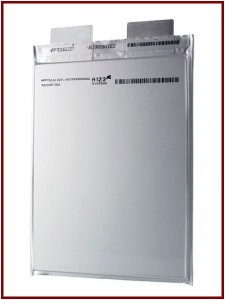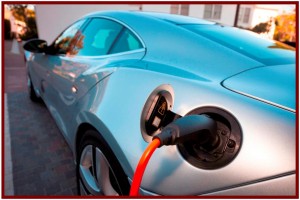
Quality control is critical when assembling lithium ion cells and packs, but the processes used are well known and widely used.
A123 Systems (Nasdaq: AONE), a taxpayer-subsidized developer and manufacturer of advanced lithium iron phosphate batteries, today announced it has launched a recall to replace battery modules and packs that may contain defective cells produced at A123’s Livonia, Mich. plant.
The estimated $55 million – best guess- recall comes after the well-publicized failure during testing of a Fisker Karma that was owned by Consumer Reports. A123, an investor in Fisker as well as supplier, lost almost $260 million in 2011. A123 received a $249.1 million grant from the Department of Energy to reopen plants in Livonia and Romulus, Mich., as well as money and tax credits from Michigan worth more than $100 million. The future of A123, which has never earned a profit, is not clear.
At least four other unnamed product programs are potentially affected by what is a global recall. A123 supplies batteries to General Motors, BMW, Daimler and Ford, among others. A123, which makes modules for some customers and entire lithium battery packs for others, said it could not define the total number of systems impacted.
A123 has begun building replacements and expects to begin shipping them to customers this week. It will take the start-up company “several quarters” to fund the recall, A123 said. “This situation will require us to adjust our fund-raising strategy. We plan to provide an updated outlook during our next quarterly [non?] earnings call,” a press release said.
“We have isolated the root cause of the defective cells and we are confident that we have pinpointed the source of the defect and corrected it. As a result of engineering analysis and testing, we believe this is not a safety issue, and we have determined the root cause and have taken corrective actions,” said David Vieau, CEO of A123 Systems.
However, A123 will have to convince the National Highway Traffic Safety Administration that the cells, which can short circuit, killing the battery and disabling an electric car, are not dangerous. Several incidents have been reported.
The root cause is said to be the incorrect calibration of one of four automated tab-welding machines in the prismatic cell manufacturing process at the Livonia plant, which caused a misalignment of a component in some cells.When assembled the cell’s insulation is punctured, which leads to the failure of the cell or the entire battery. A123 said it has made hundreds of thousands of high-quality prismatic cells at another facility.
“While the initial rapid ramp up of our Michigan operations to satisfy customer demand has resulted in near-term operational challenges, we are confident in our ability to overcome these issues. While we make no excuses and accept full responsibility for this situation, we believe that we have taken corrective actions to address this problem and improve our operations to move forward and continue delivering high quality products to our customers,” said Vieau.
A123 uses nanophosphate as a positive electrode material that’s claimed to have higher usable energy than other lithium ion technologies. This – in theory – enables greater battery use. A123 says that “high usable energy results from the combination of good abuse tolerance and calendar life at high state of charge (SOC), as well as excellent power buy cialis online no rx capability at low SOC. In addition, the technology has excellent deep-discharge cycle life, meaning that you don’t need to protect the battery by cycling it more shallowly.”
A123 Systems previously had a battery-coolant leak problem that caused Fisker Automotive to recall more than 300 of its $102,000 Karma plug-in electric cars. Fisker today announced a new battery warranty that includes a battery replacement at no cost for all affected 2012 Fisker Karma owners. North American customers will receive a full vehicle warranty extension from 50 months/50,000 miles to 60 months/60,000 miles. In Europe, coverage also will be extended from 48 months/100,000 km to 60 months/100,000 km.

Millions upon millions of taxpayer dollars are flowing into electric cars and the expensive batteries in them.
Since last May, Fisker has been in discussions about the terms of the DOE loans, in a thus far unsuccessful attempt to have the timing or milestones modified for its delayed development programs. Meanwhile project Nina has been “temporarily” put on hold until financing, either from the DOE or elsewhere, can be secured.
Next week at the New York Auto Show, the Anaheim, California-based Fisker will show the Nina, the plug-in it wants to build (eventually) in Wilmington, Delaware, and to provide an update on business.
Fisker currently does sell the Karma plug-in electric sports car for $102,000 in the United States, but it is made in Finland. Thus far, sales of sports car – $100 million in revenue since December of 2011 – have not been strong enough to make the company profitable. There is a station wagon version – Surf – in the works.
The DOE advanced technology loan programs have been subject to criticism, particularly among Republicans in Congress, since the bankruptcy of solar-panel maker Solyndra last fall, which was also the subject of generous taxpayer subsidies. At least two other ‘green’ company start-ups have failed after receiving taxpayer money through the DOE.
The Obama Administration also used taxpayer-funded subsidies to encourage production of the Chevrolet Volt. These include $151.4 million in stimulus funds for LG Chem, which produces lithium-ion polymer battery cells for the Volt and $105 million given directly to GM, as well as an end-user federal tax credit of up to $7,500 per Volt purchased. Such subsidies will likely be hotly debated for all industries during the election.
See also:
- Fisker Automotive Makes Tom LaSorda CEO
- GM and SAIC to Develop New Electric Vehicle in China with U.S. Taxpayer Supported GM’s EV Knowledge and Technology
- Energy Conversion Devices Files Chapter 11, Sells Ovonic Battery. Common Stock to Be Worthless Under Reorganization
- Volt Fire Hearings Pits Ideologues versus Engineers

